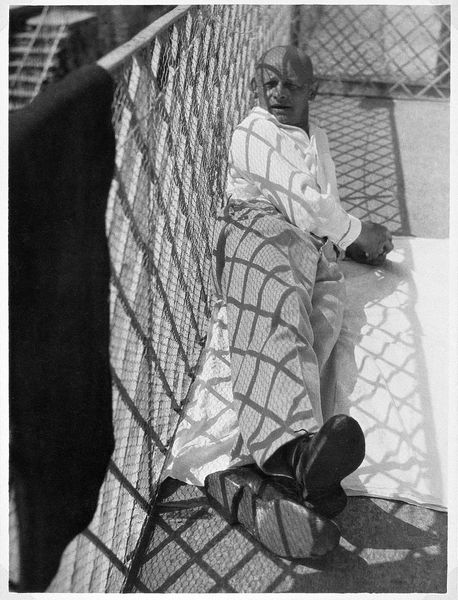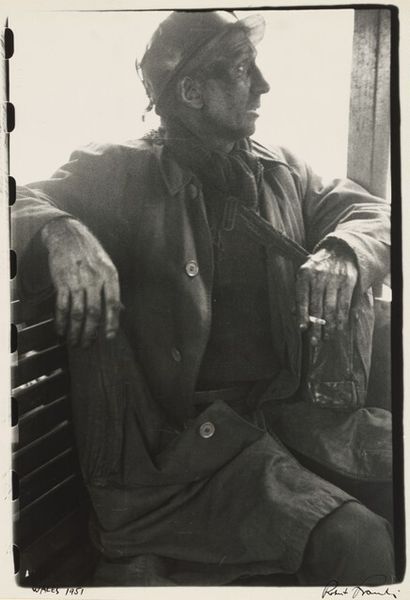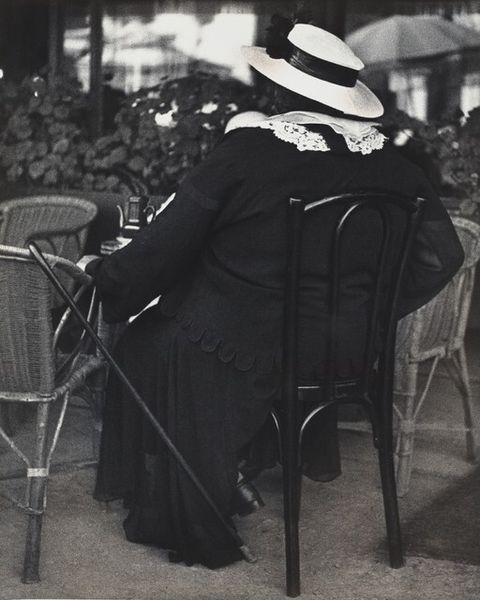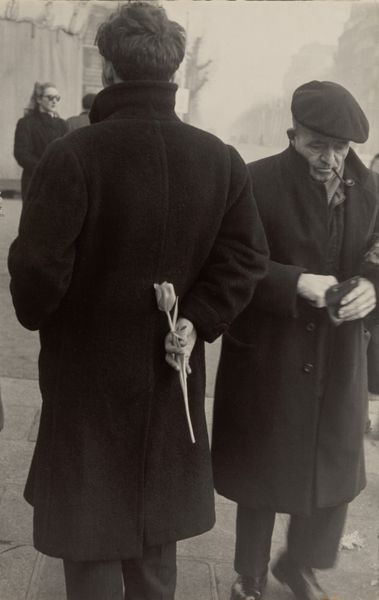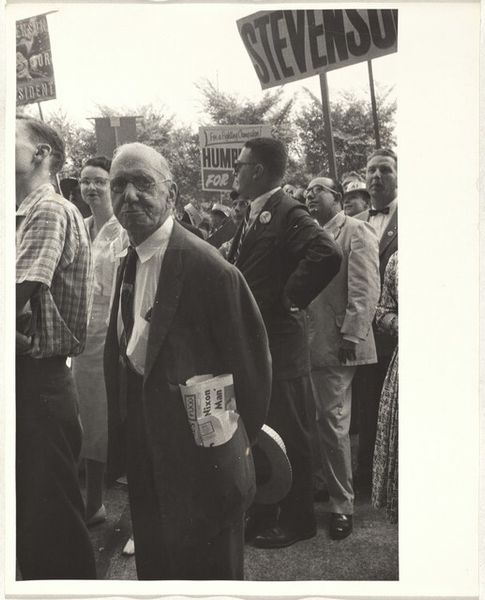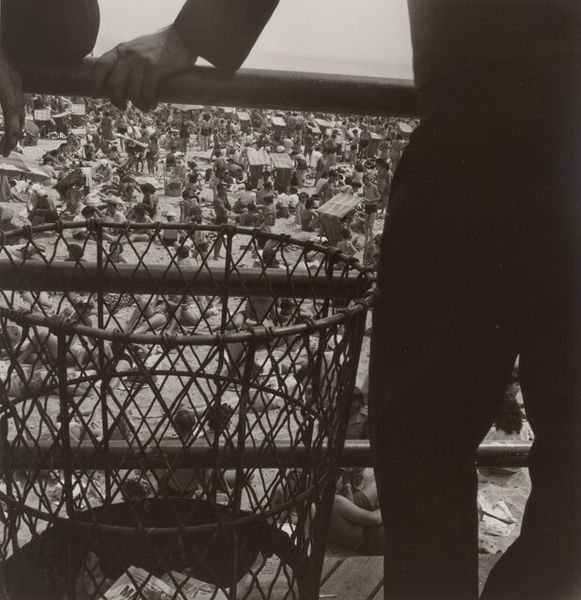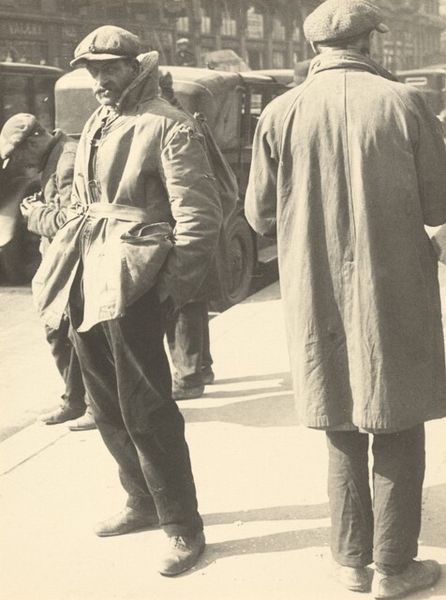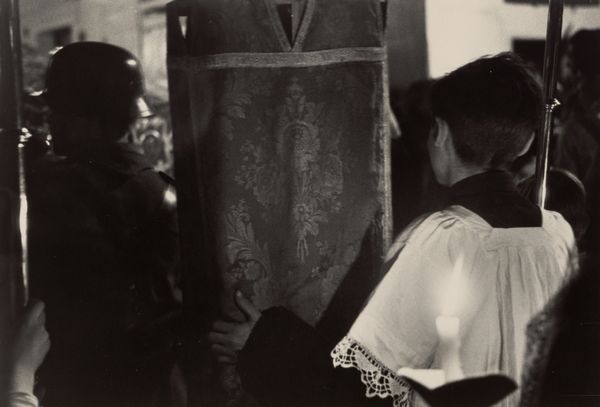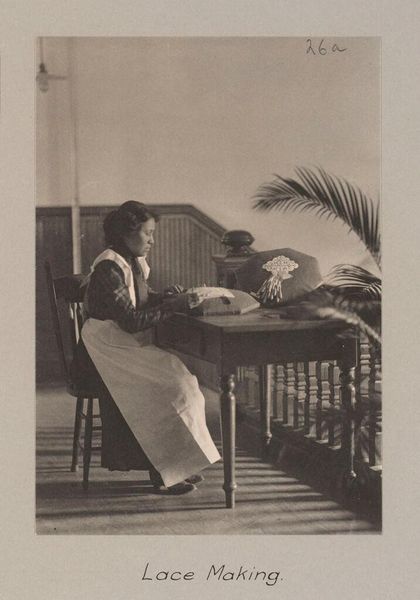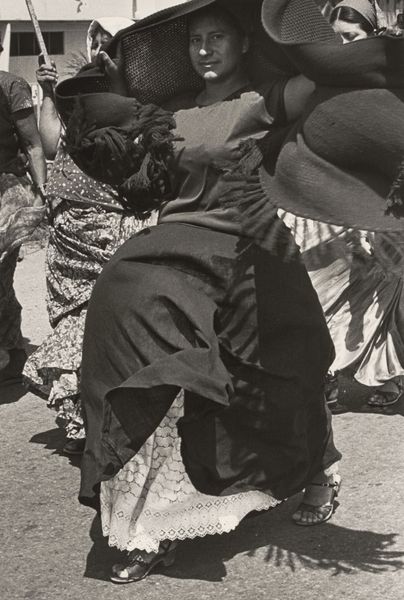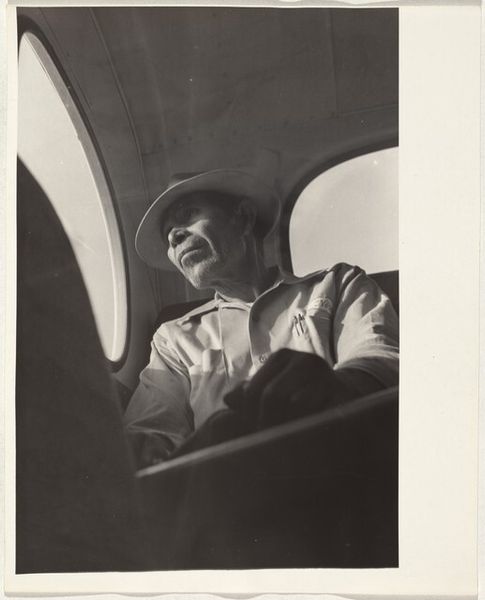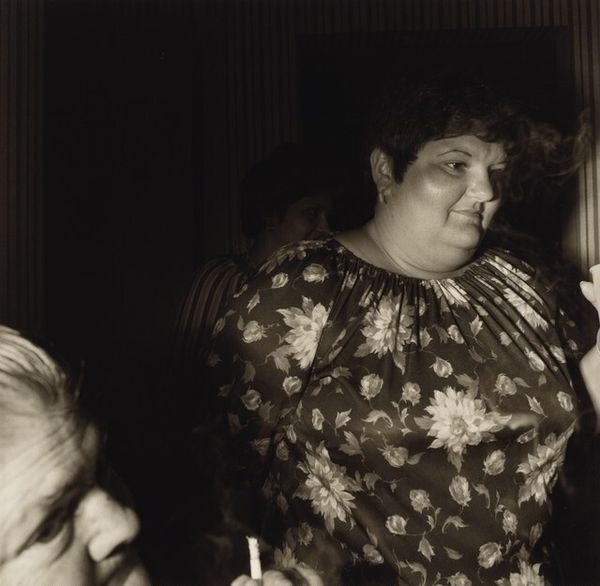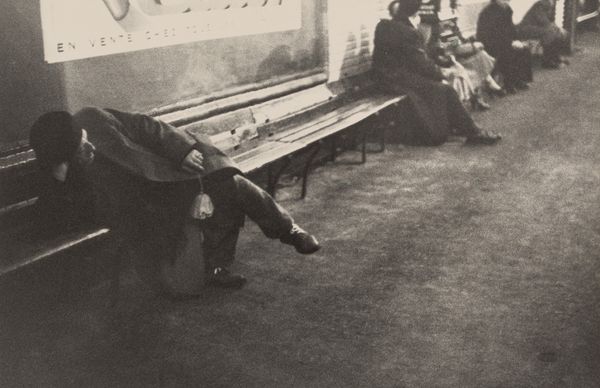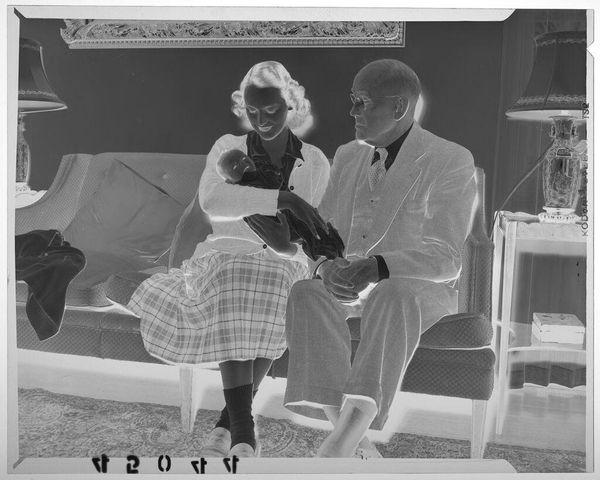
photography, gelatin-silver-print
#
portrait
#
black and white photography
#
street shot
#
outdoor photo
#
black and white format
#
archive photography
#
street-photography
#
photography
#
historical photography
#
black and white theme
#
black and white
#
gelatin-silver-print
#
monochrome photography
#
monochrome
#
modernism
#
realism
Dimensions: sheet (trimmed to image): 35 x 27.2 cm (13 3/4 x 10 11/16 in.)
Copyright: National Gallery of Art: CC0 1.0
Curator: This gelatin-silver print, titled "Promenade des Anglais," was captured in 1934 by Lisette Model. Editor: It's so still, isn't it? The deep shadows make the scene feel weighty, like time itself is pressing down. Curator: Exactly. Model had this uncanny ability to freeze fleeting moments and somehow reveal a character's inner life through their outward appearance. She was, as some said, photographing feelings more than faces. Editor: Look how the geometric pattern of the ground competes with the vertical lines of the chair. There’s this tension created through those contrasting patterns which speaks to a modernist sensibility. Then, you have the subjects themselves. Their clothing, the way they are staged... all point towards intentional design that makes effective use of available light. Curator: It's remarkable how she found poetry in the everyday. You have this anonymous figure relaxing, yes, but Model isn’t simply documenting a scene—there’s a story here, almost theatrical. What do you think of his mismatched socks? Editor: Intriguing! It injects such unexpected personality and humaneness into what could have been just another snapshot of leisure. It is a detail you easily miss. It’s so subtle but defiant, and creates some internal dissonance against the expected rigidity of upper class representation. It's beautifully composed from this point of view! Curator: Lisette Model’s photography strips bare, showing the quiet drama hidden within the ordinary moments and people we often overlook. You know, she didn't crop her photos, and the final print was all she needed. It almost tells us the entire history behind it. Editor: She exposes more than just her subject—through the lens of her black and white frame, she captures an essence that still reverberates.
Comments
No comments
Be the first to comment and join the conversation on the ultimate creative platform.
